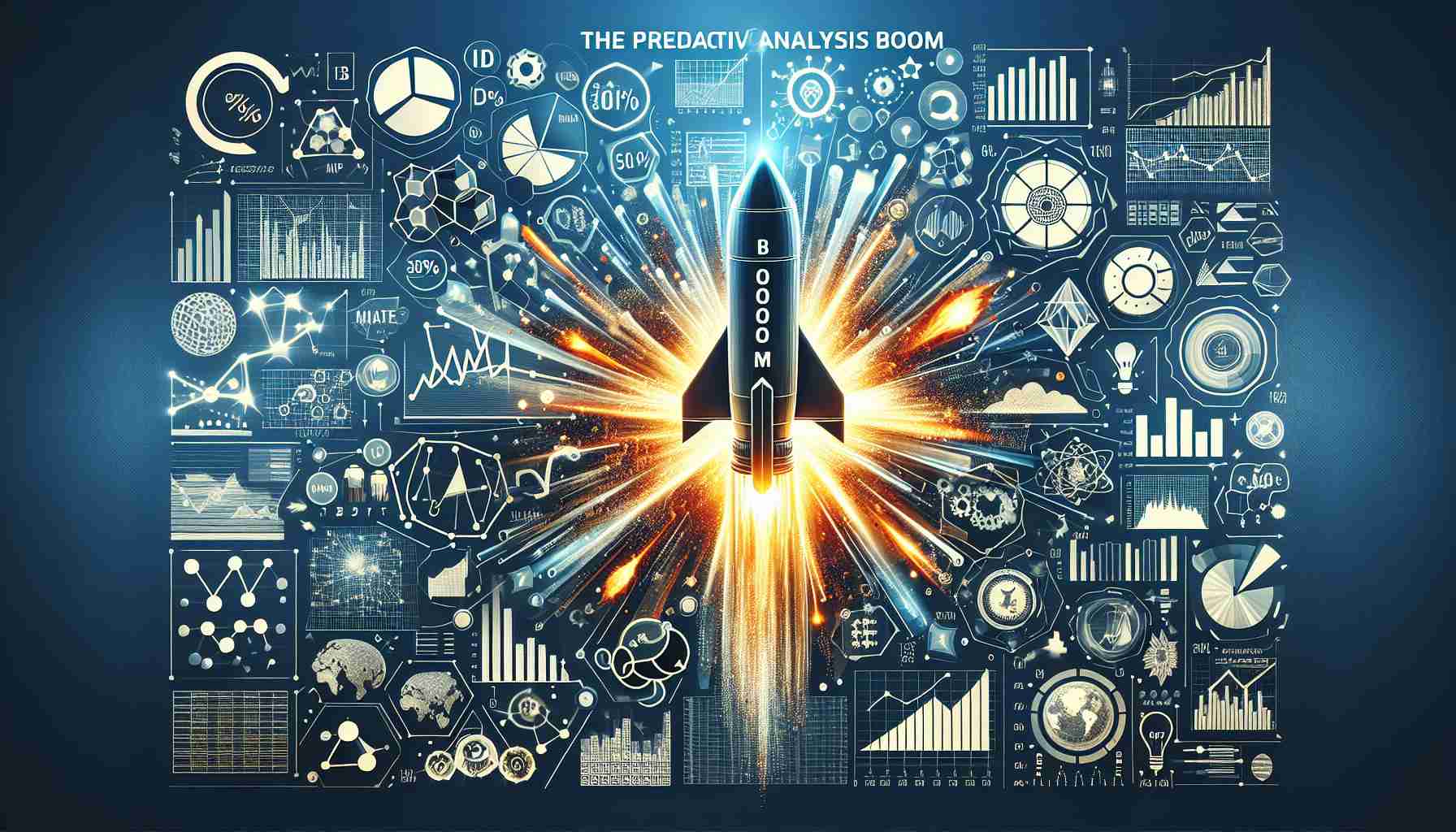The Rapid Rise of Predictive Analytics
The predictive analytics market is experiencing remarkable growth, anticipated to soar from $20.77 billion in 2025 to an impressive $52.91 billion by 2029. This surge represents a compound annual growth rate (CAGR) of 26.3%, showcasing the increasing importance of data-driven insights across industries.
As of 2024, the market valued at $17.07 billion is set to grow following a significant CAGR of 21.6% through 2025. The major force behind this expansion is the widespread adoption of big data technologies that are transforming how businesses operate. Innovations such as edge computing, streaming analytics, and artificial intelligence are at the forefront of this trend. In Europe alone, the big data market reached EUR 73.37 billion in 2022, highlighting the region’s commitment to integrating advanced analytics solutions.
The landscape of key players includes
IBM, Microsoft, Oracle, and SAP, among others, who are pioneering this market evolution. Businesses are focusing on advanced machine learning, explainable AI, and improving cybersecurity measures.
Currently, North America leads the market, with growing segments in various industries, including finance, manufacturing, and retail. This upward trajectory indicates a promising future for predictive analytics, driven by continuous technological advancement and a data-centered approach across the globe.
The Broader Implications of Predictive Analytics
The rapid ascent of predictive analytics is not merely a technological evolution; it holds profound implications for society and the global economy. As businesses increasingly rely on data-driven insights, decision-making processes are becoming more efficient and transparent, fostering a culture of accountability and responsibility. This shift enhances consumer trust, as organizations use predictive models to anticipate needs and tailor services, thus improving customer satisfaction and loyalty.
In terms of the global economy, the expansion of predictive analytics is emblematic of a transformative era where data serves as the new currency. Industries such as healthcare are leveraging these insights to predict patient outcomes and optimize resource allocation, ultimately leading to improved public health outcomes. As organizations harness the power of analytics, the potential for job creation in data science and machine learning is substantial, signaling a shift in workforce demand and educational focus.
Nonetheless, the environmental effects of this technology warrant consideration. The need for data centers and cloud computing infrastructures raises questions about energy consumption and carbon footprints. As predictive analytics becomes ubiquitous, the industry must grapple with its sustainability—adopting greener practices in data handling and processing.
Looking ahead, as analytics tools evolve, we may see AI-driven predictive models becoming commonplace across various sectors, influencing everything from urban planning to environmental conservation efforts. The long-term significance of predictive analytics lies in its ability to drive profound change—potentially reshaping our economic landscapes, societal structures, and ethical considerations in how data is utilized. The stakes are high, and the journey is just beginning.
Unlocking the Future: The Explosive Growth of Predictive Analytics
The Rapid Rise of Predictive Analytics
The predictive analytics market is on a trajectory of unprecedented expansion, poised to grow from $20.77 billion in 2025 to an astonishing $52.91 billion by 2029. This represents a compound annual growth rate (CAGR) of 26.3%, underscoring the vital role that data-driven insights are playing across a myriad of industries.
Current Market Trends and Projections
As of 2024, the market is valued at approximately $17.07 billion and is projected to witness a significant CAGR of 21.6% through 2025. This growth is largely attributed to the widespread adoption of big data technologies, which are reshaping the operational landscape for businesses. Innovations driving this momentum include:
– Edge computing: Allowing data processing at the source to enable real-time analysis.
– Streaming analytics: Facilitating continuous data processing for immediate insights.
– Artificial Intelligence (AI): Enhancing predictive modeling to uncover trends and patterns.
Notably, Europe recorded a big data market size of EUR 73.37 billion in 2022, indicating the region’s strong commitment to implementing advanced analytics solutions in varied sectors.
Key Players and Technological Innovations
Dominating the predictive analytics sector are established players like IBM, Microsoft, Oracle, and SAP. These companies are not only leading in revenue but also pioneering innovative solutions in the areas of:
– Advanced Machine Learning: Developing algorithms that improve over time through experience.
– Explainable AI: Enhancing transparency in decision-making processes by making AI decisions understandable to humans.
– Cybersecurity Enhancements: Implementing predictive analytics to forewarn about potential threats, thereby strengthening data protection measures.
Industry Applications and Use Cases
Predictive analytics is significantly impacting several industries, notably:
– Finance: Risk management and fraud detection to drive better financial decisions.
– Manufacturing: Predictive maintenance that reduces downtime and costs by anticipating equipment failures.
– Retail: Customer behavior prediction to optimize inventory and personalize marketing strategies.
Challenges and Limitations
Despite its potential, predictive analytics comes with challenges:
– Data Privacy Concerns: With strict regulations such as GDPR, companies must balance predictive capabilities with compliance.
– Integration Complexity: Merging predictive analytics with existing systems can be technically demanding.
– Data Quality Issues: Poor quality data can lead to inaccurate predictions, undermining business decisions.
Future Directions and Insights
The predictive analytics landscape is expected to evolve further, focusing on enhancing data accessibility and usability. As organizations increasingly embrace a data-centric approach, innovations in quantum computing and blockchain technology might pave the way for more robust and secure analytics frameworks.
Conclusion
The growth trajectory of the predictive analytics market signals a transformative shift in how businesses leverage data. As the technologies advance and the ethical implications are addressed, organizations that adopt predictive analytics are likely to see substantial competitive advantages.
For more insights into the evolving world of predictive analytics, be sure to visit IBM for cutting-edge solutions and analysis.











